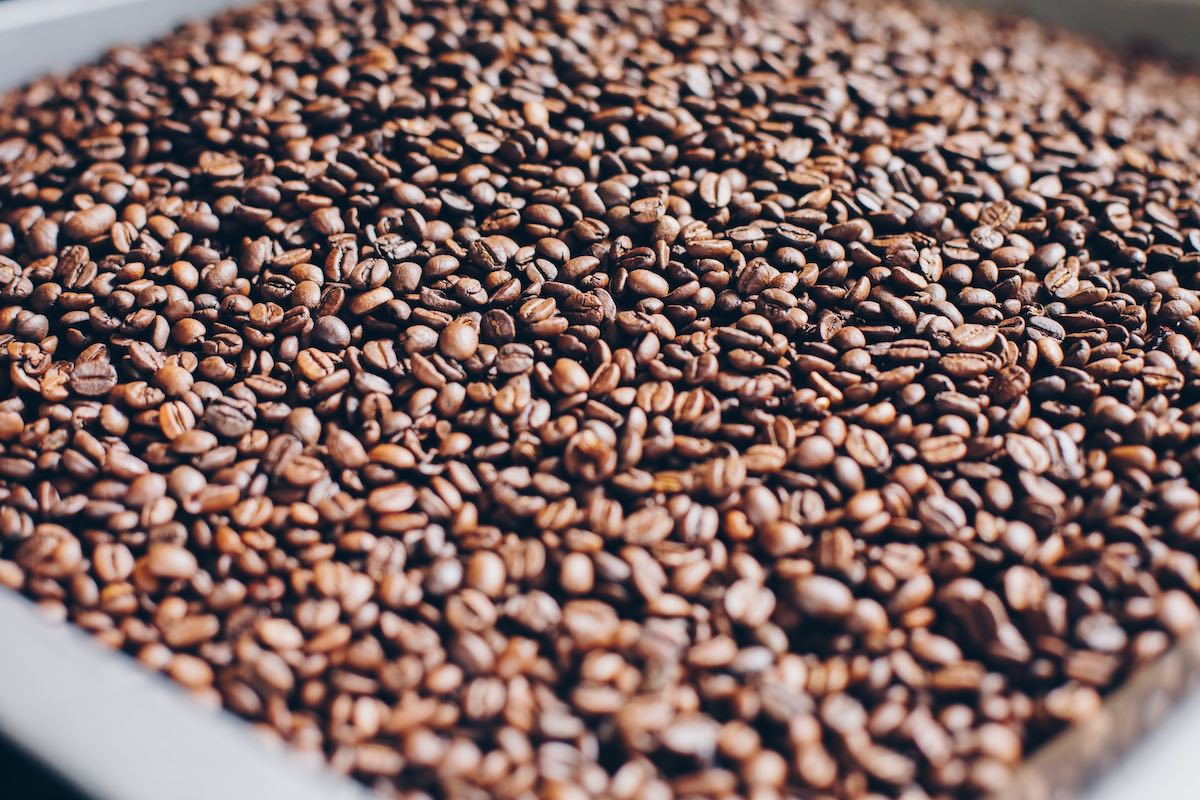

If you’re into craft coffee, you’ve probably noticed the process method or milling process label on your coffee bags. Most of them probably say “natural” or “washed,” the two most common coffee processing methods. Other types of processing include “honey,” “semi-washed,” “anaerobic,” and “carbonic maceration.”
Our focus today is on washed vs. natural coffee. We’ll spill the beans on how each process works, their similarities and differences, and how they affect the flavor of your coffee. We’ll also briefly cover the other coffee processing methods, so you have an idea of what they are if you ever want to try them.
You see, the key to roasting beautiful beans that taste amazing is getting high-quality green beans in the first place. If you don’t have that, there’s no magic party trick you can use to make the lousy beans good. The way a coffee is processed plays an essential role in bean quality – and how good your coffee tastes in your cup after brewing.
On Deck (Table of Contents)
The beans we use to roast our coffee grow inside the “cherries” of coffee trees. Coffee processing is separating the coffee beans (or seeds) from the fruit. The two most common methods for extracting the seeds are natural coffee processing and washed coffee processing. Each process involves removing the outer skin (or pulp) of the fruit after harvesting.
Natural coffee processing – also called dry process coffee – involves drying the coffee beans inside the cherry (before extraction). Natural coffee processing is the more traditional method and may be the sole processing option in countries with a limited water supply. Regions like Ethiopia, Brazil, Yemen, and Costa Rica often dry process their coffees.
Here’s a step-by-step overview of how natural coffee processing works:
The dry coffee processing method allows the fruit and beans to remain intact longer than washed coffee processing. This can create a fruitier-tasting coffee. You’ll often see natural processed coffees with sweet berry notes and more body than washed coffees. The fragrance can be more potent as well, with a strawberry or blueberry scent.
Sun drying also pulls out the sugars in the beans through natural fermentation. This can result in less consistent flavors than you’ll find with many washed coffees. However, many coffee drinkers prefer the heavier body and fruity characteristics of natural processed coffees.
Washed coffee processing (or wet process coffee) involves extracting the beans from the cherry pulp before drying. After removal, the beans are fermented to remove any remaining pectin (mucilage) attached to the beans and parchment (the outer membrane of the bean). Next, the beans are washed until clean. Now, they’re ready to dry.
Washed coffee processing is more common today than dry processing because of its speed and consistency. It’s less labor intensive than dry processing and, in some cases, can produce higher-quality coffees. Of course, it requires the proper equipment and resources (i.e., freshwater access), which not all coffee farms have.
Washed coffees tend to be more acidic and brighter in flavor than natural processed coffees. They also have a lighter body, cleaner mouthfeel, and can taste nutty and complex.
In short, it all depends on your coffee body and flavor preferences. Natural processed coffee will generally take on more of the flavors of the fruit. It will also taste richer and heavier than washed processed coffee. When drinking washed coffee, you’ll taste more of the flavors of the bean itself. It will taste cleaner, brighter, and more acidic.
Both coffee processing methods can produce excellent specialty coffees that taste delicious. Washed coffee is more common today and may be preferred overall in the third-wave coffee community due to its greater consistency and distinct flavor profile. But at the end of the day, what matters most is how the coffee tastes to you when you drink it. We recommend experimenting with different coffees from various regions to find your favorite.
Honey process coffee is a hybrid of natural and washed processing. It’s very labor intensive. The beans are extracted from the fruit while leaving some of the mucilage (the sticky, honey-like substance) intact. As the beans dry, the sugars from the mucilage make the beans sweeter.
Depending on the region, anywhere from 0-100% of the mucilage may be removed before drying. For example, black honey coffee removes a minimal amount of mucilage, while white honey removes almost all of it. Yellow honey and red honey fall somewhere in between.
The flavor of honey process coffee is also a mix of the two primary coffee processing methods. You’ll get a bean with a heavier body and acidic, bright notes.
This processing method is relatively common and begins the same way as washed coffee. The fruit is sent through a depulper, leaving the mucilage around the beans intact. The beans are stored and dried for about a day – to absorb some of the sugars – and then washed clean and thoroughly dried until they’re ready to export.
The anaerobic coffee process is also similar to the washed coffee process – only it doesn’t use oxygen during fermentation. Instead, the beans ferment in airtight tanks to produce highly complex flavors.
Like the anaerobic process, carbonic maceration involves fermenting the coffee cherries in a carbon dioxide-rich container. That way, the beans absorb the flavors of the fruit.
Check out our selection of single-origin coffees from across the world. We offer specialty coffees that have been processed using washed and natural methods. If you stop by our shop in Virginia Beach, we can help you pick out something you’ll love. You can also order online, and we’ll send freshly roasted beans straight to your doorstep. We can’t wait to serve you!


India is the sixth largest coffee exporter in the world. But it hasn’t always been that way. From smuggling a few measly coffee beans into

Coffee is a lot of things: comforting, energizing, tasty, even trendy. But did you know it also has an abundance of health benefits? If you